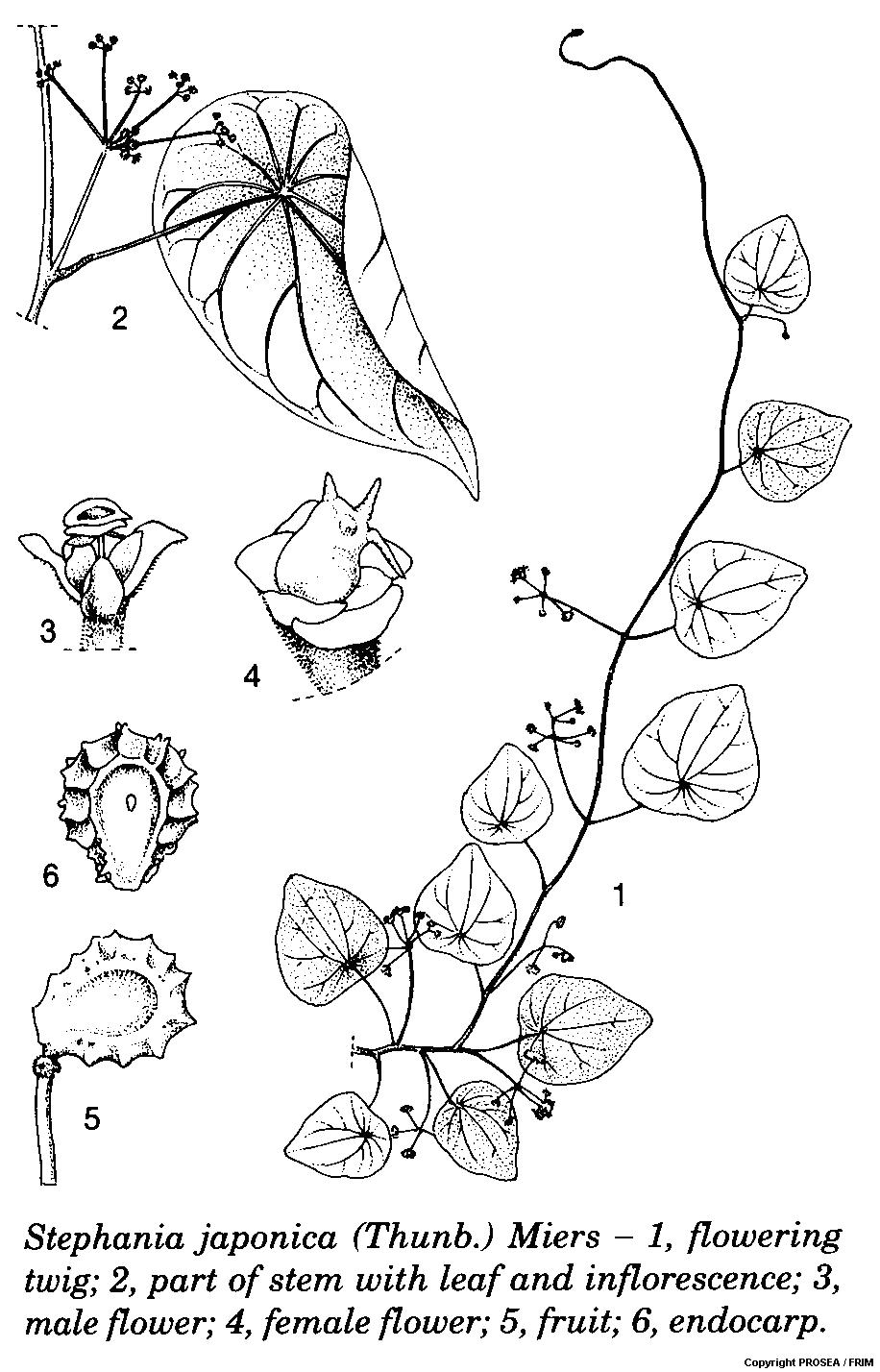Stephania japonica (Thunb.) Miers
Family
Menispermaceae
Synonyms
None
Vernacular Names
| Indonesia | Areuy geureung (Sundanese), kepleng (Javanese), ginato bobudo (Moluccas). |
| Thailand | Kon pit (Central), pang pon (Northern), tap tao (Peninsular). |
| Philippines | Malabuta (lgorot), maratugi (Iloko), kuren (Ibanag). |
| Vietnam |
Thi[ee]n kim d[awf]ng, d[aa]y l[ox]i ti[eef]n. |
Geographical Distributions
Stephania japonica is distributed in Nepal, India, Burma (Myanmar), Indo-China, southern China, Taiwan, Japan, Thailand, throughout Malesia, northern and eastern Australia and Polynesia.
Description
Stephania japonica is a slender climber that can reach up to 10 m long. The root is tuberous while the stem is herbaceous or thinly woody.
The leaves are broadly triangular-ovate to ovate, and measuring (4-)6-12(-17) cm x 4-10(-14) cm.
The flowers are in an axillary, compound, umbrella-shaped cyme, which are sessile or subsessile.
The red fruit is sessile or subsessile while the endocarp is dorsally with 4 rows of processes.
Ecology / Cultivation
Stephania japonica occurs in secondary forests, regrowths, hedges, thickets and on river banks, also in Nypa swamp, up to 2000 m altitude.
Line Drawing / Photograph
References
- Plant Resources of South-East Asia No. 12(1): Medicinal and poisonous plants 1.


